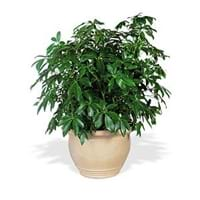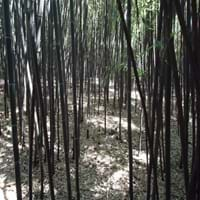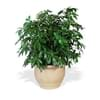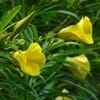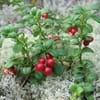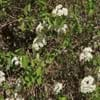Life Span
Perennial
Perennial
Type
Broadleaf Evergreen
Grass
Origin
Southeastern Asia, China
Southeastern Asia
Types
Schefflera actinophylla, Schefflera morototoni, Schefflera heptaphylla
Clumping bamboo, Running bamboo, Umbrella bamboo
Number of Varieties
Not Available
Habitat
Moist Soils
Subtropical climates, Tropical regions
USDA Hardiness Zone
10-15
9-15
AHS Heat Zone
Not Available
12 - 8
Sunset Zone
21,22
H1, H2, 18, 19, 20, 21, 22, 23, 24
Habit
Oval or Rounded
Clump-Forming
Minimum Width
Not Available
Flower Color
Red, Bronze
Yellow green
Flower Color Modifier
Bicolor
Bicolor
Fruit Color
Orange, Black
Non Fruiting Plant
Leaf Color in Spring
Green
Green
Leaf Color in Summer
Green, Dark Green
Light Green
Leaf Color in Fall
Green, Dark Green
Green
Leaf Color in Winter
Dark Green
Green
Leaf Shape
Ovate
Lance shaped
Plant Season
Spring, Summer, Fall, Winter
Spring, Summer, Fall, Winter
Sunlight
Partial Sun, Partial shade
Full Sun, Partial Sun
Growth Rate
Medium
Very Fast
Type of Soil
Loam, Sand
Loam, Sand
The pH of Soil
Acidic, Neutral, Alkaline
Acidic, Neutral, Alkaline
Soil Drainage
Well drained
Average
Bloom Time
Early Summer, Summer
Not Available
Tolerances
Not Available
Cold climate, Drought, Salt
Where to Plant?
Container, Ground, Pot
Ground
How to Plant?
Cuttings
Stem Planting
Plant Maintenance
Medium
Medium
Watering Requirements
Allow to dry out slightly between watering, Average Water Needs, Do Not over Water, Keep ground moist, Requires regular watering
Requires regular watering, Water more in summer
In Summer
Lots of watering
Lots of watering
In Spring
Moderate
Moderate
In Winter
Average Water
Average Water
Soil pH
Acidic, Neutral, Alkaline
Acidic, Neutral, Alkaline
Soil Type
Loam, Sand
Loam, Sand
Soil Drainage Capacity
Well drained
Average
Sun Exposure
Partial Sun, Partial shade
Full Sun, Partial Sun
Pruning
Prune if you want to improve plant shape, Prune ocassionally, Remove damaged leaves, Remove dead branches, Remove dead leaves, Remove dead or diseased plant parts, Remove deadheads
No need to prune, Remove damaged leaves, Remove dead branches, Remove dead leaves
Fertilizers
All-Purpose Liquid Fertilizer, Fertilize once a year
All-Purpose Liquid Fertilizer
Pests and Diseases
Red blotch
Aphids, Insects, Red blotch
Plant Tolerance
Not Available
Cold climate, Drought, Salt
Flowers
Insignificant
None
Flower Petal Number
Single
Single
Fragrant Bark/Stem
Yes
No
Foliage Texture
Medium
Fine
Foliage Sheen
Glossy
Matte
Attracts
Ants, Aphids, Birds, Bugs, Wildlife
Aphids, Insects
Allergy
breathing problems, Burning sensation, Difficulty swallowing, Poisonous, Swelling
no allergic reactions
Aesthetic Uses
Bonsai, Showy Purposes
Beautification, Showy Purposes
Beauty Benefits
Not Available
No Beauty Benefits
Edible Uses
Insignificant
Yes
Environmental Uses
Air purification, Indoor Air Purification
Air purification
Medicinal Uses
Abdominal Disease, Arthritis, Bleeding, Kidney Stones, Muscle Pain, Recovering internal injuries, Rheumatism, Swelling, Upset stomach
No Medicinal Use
Part of Plant Used
Flowers, Root
Stem, Tree trunks
Other Uses
Container, Showy Purposes, Used for making hedge
Air freshner, Decoration Purposes
Used As Indoor Plant
Yes
Yes
Used As Outdoor Plant
Yes
Yes
Garden Design
Container, Foundation, Hedges, Houseplant, Mixed Border, Screening, Wind Break, Topiary, Bonsai, Espalier, Tropical
Feature Plant, Tropical
Botanical Name
SCHEFFLERA arboricola
BAMBUSA lako
Common Name
Umbrella plant
Black Timber Bamboo, Clumping Bamboo, Timor Black Bamboo
In Hindi
Arboricola
Plant
तिमोर काला बांस
In German
arboricola
Pflanze
Timor-schwarzer Bambus
In French
arboricola
Plante
Timor bambou noir
In Spanish
arboricola
Planta
Timor Negro de bambú
In Greek
Αρμπορικόλα
Φυτό
Τιμόρ Μαύρο μπαμπού
In Portuguese
arboricola
Plantar
Timor Black Bamboo
In Polish
arboricola
Roślina
Timor Czarny Bambus
In Latin
arboricola
planta
Timor Niger Bamboo
Phylum
Vascular plant
Magnoliophyta
Class
Magnoliopsida
Liliopsida
Family
Araliaceae
Poaceae
Clade
Angiosperms, Asterids, Eudicots
Angiosperms, Commelinids, Monocots
Tribe
Not Available
Poaceae
Subfamily
Aralioideae
Barnadesioideae
Number of Species
Not Available
Importance of Arboricola and Timor Black Bamboo
Want to have the most appropriate plant for your garden? You might want to know the importance of Arboricola and Timor Black Bamboo. Basically, these two plants vary in many aspects. Compare Arboricola and Timor Black Bamboo as they differ in many characteristics such as their life, care, benefits, facts, etc. Every gardener must at least have the slightest clue about the plants he wants to plant in his garden. Compare their benefits, which differ in many ways like facts and uses. The medicinal use of Arboricola is Abdominal Disease, Arthritis, Bleeding, Kidney Stones, Muscle Pain, Recovering internal injuries, Rheumatism, Swelling and Upset stomach whereas of Timor Black Bamboo is No Medicinal Use. Arboricola has beauty benefits as follows: Not Available while Timor Black Bamboo has beauty benefits as follows: Not Available.
Compare Facts of Arboricola vs Timor Black Bamboo
How to choose the best garden plant for your garden depending upon its facts? Here garden plant comparison will help you to solve this query. Compare the facts of Arboricola vs Timor Black Bamboo and know which one to choose. As garden plants have benefits and other uses, allergy is also a major drawback of plants for some people. Allergic reactions of Arboricola are breathing problems, Burning sensation, Difficulty swallowing, Poisonous and Swelling whereas of Timor Black Bamboo have no allergic reactions respectively. Having a fruit bearing plant in your garden can be a plus point of your garden. Arboricola has showy fruits and Timor Black Bamboo has no showy fruits. Also Arboricola is not flowering and Timor Black Bamboo is not flowering . You can compare Arboricola and Timor Black Bamboo facts and facts of other plants too.
